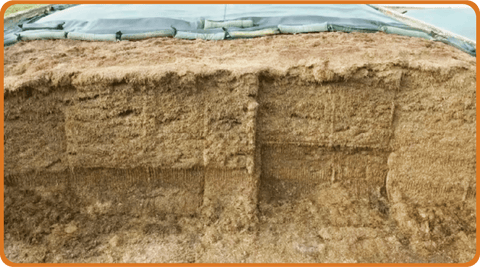Professor Mike Wilkinson of Nottingham University UK reviews research findings.
Successful management of silage in bunker silos and drive-over piles requires maintaining anaerobic conditions throughout the storage and feed-out periods. Visible surface spoilage and loss of nutrients occur when oxygen permeates a standard polyethylene film cover or when birds, animals or wind damage the cover. Layers of grey or black spoiled silage and mould growth are often seen on the surface of a bunker or pile. Signs of overheating might be evident - dark brown coloration and a caramel or tobacco smell.
Spoiled silage, which is judged to be unfit for use as animal feed, is normally discarded after the covering material is removed and the silage is exposed prior to feed-out. However, the inclusion of spoiled silage in the ration, by choice or by accident, poses risks both to livestock health and productivity.
Spoiled silage and livestock

There has been very little research on what effect exposing silage to oxygen has on its nutritional value. In an experiment at Kansas State University the top 3 feet of corn silage in a pilot-scale bunker silo was left unsealed for the first 90 days post-ensiling. The original top 18-inch layer of silage had a final depth of only about 7 inches, had a foul smell, was mostly black in colour, and had a mud-like (slime) texture. This surface spoilage was fed to steers fitted with ruminal cannulas, and the amount of ‘slime’ spoilage was 0, 5.4, 10.7, and 16.0 percent of the dry matter (DM) in rations A to D, respectively. The results showed that feeding surface-spoiled corn silage had a significant negative impact on DM intake and nutritive value of a silage-based, growing ration. The first increment of surface spoilage had the largest detrimental effect on the digestibility of organic matter, neutral detergent fibre, and acid detergent fibre.

Effect of feeding surface-spoiled corn silage on DM intake and digestibility of organic matter,
crude protein, neutral detergent fiber (NDF) and acid detergent fiber (ADF).
Recent research at the University of Bonn in Germany showed an average 57 percent reduction in DM intake of corn silage, which was exposed to air for 8 days prior to being offered to cattle in a preference trial. The temperature of the silages was stable for the first 48 hours of exposure to air. Dry matter content, pH, and counts of yeast, mold and aerobic mesophilic bacteria increased during exposure to air, while concentrations of fermentation products decreased, with the largest changes occurring between 4 and 8 days of exposure to air. Accumulated temperature above ambient during exposure to air was the best predictor of silage intake.
The most common livestock diseases associated with feeding spoiled silage are mycotoxicosis and listeriosis. Signs of mycotoxicosis include decreased feed intake and impaired fertility, reduced milk yield, reduced growth rate, and suppressed immune status with resulting increased incidence and severity of infectious diseases, such as mastitis and diarrhoea. Listeria monocytogenes can develop in large numbers in wet mouldy silage, especially when oxygen ingress is significant due to physical damage to the cover.

Oxygen barrier film
Oxygen barrier (OB) film reduces surface spoilage in the top 1 to 3 feet of bunker silos and drive-over piles by restricting oxygen permeation and reducing the development of yeast, mold and undesirable bacteria, including butyric acid bacterial spores, during the storage period.
A meta-analysis, which was published recently in the journal Grass and Forage Science, showed that an oxygen barrier film was superior to standard polyethylene film in minimizing silage DM losses, reducing visible spoilage and improving aerobic stability of silage stored in bunkers and piles. The analysis included 41 trials from North America, South America, Australia and Europe.

Comparisons of oxygen barrier film and standard polyethylene film showed:
Reduced loss in the top 2 feet. Average losses of DM or organic matter from the top layer of silage in bunkers and piles were 19.5% for standard film and 11.4% for oxygen barrier film.
• Less visible spoilage. Inedible silage that had to be discarded from the top surface of the bunkers and piles was 10.7% for standard film and 3% for oxygen barrier film. This finding means less feed waste, greater feed cost savings, less labor to discard top-layer spoilage and reduced risk of feeding it to livestock.
• Increased aerobic stability. Aerobic stability averaged 75 hours for silage stored under standard film and 135 hours for silage stored under oxygen barrier film. This represented an improvement in aerobic stability of 2.5 days for oxygen barrier film. The researchers said the improved aerobic stability was most likely due to restricted yeast and mold growth in silage stored under the oxygen barrier film. Improved aerobic stability is particularly important when silage removal from a bunker or pile is slow and ambient temperatures are high.

